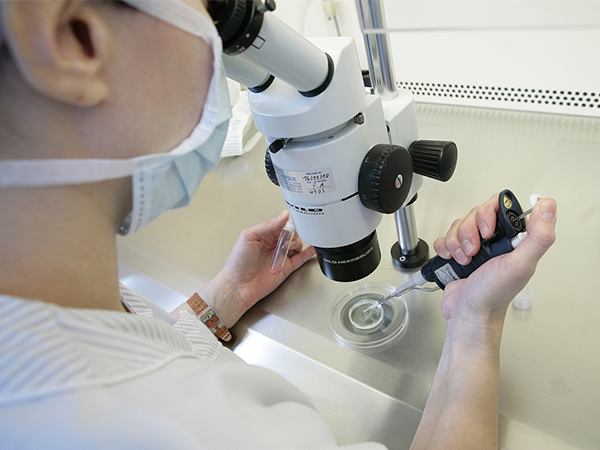Emerging Focus: Shanghai and Chongqing in Assisted Reproductive Technologies (ART) - A Comparative Analysis
In this article, we delve into the emerging landscape of assisted reproductive technologies (ART) in Shanghai and Chongqing, China. As two major cities, they represent the forefront of advancements in this field. This article aims to provide a comprehensive comparison between the developments, challenges, and future prospects of ART in both cities.

1. Infrastructure and Facilities
Shanghai boasts state-of-the-art facilities for ART, with internationally renowned clinics and research centers. The city's robust infrastructure supports cutting-edge procedures and research initiatives, attracting patients from around the globe seeking top-tier reproductive services.
In Chongqing, while the infrastructure is rapidly developing, it still lags behind Shanghai. However, recent investments and governmental initiatives indicate a growing co妹妹itment to bolstering ART facilities in the city. Despite this, Chongqing faces challenges in matching Shanghai's level of infrastructure and expertise.
2. Technological Advancements
Shanghai leads the way in technological advancements in ART, with continuous innovation and integration of the latest scientific findings. From precision embryo selection techniques to advanced cryopreservation methods, Shanghai remains at the forefront of technological breakthroughs in reproductive medicine.
Chongqing, although making strides, is yet to reach the technological sophistication seen in Shanghai. Limited access to cutting-edge equipment and research resources poses challenges to the rapid adoption of advanced ART techniques in the city. However, collaborations with Shanghai-based institutions offer opportunities for knowledge exchange and technological transfer.
3. Regulatory Framework
Shanghai benefits from a well-established regulatory framework governing ART practices, ensuring the safety and ethical standards of procedures. Stringent regulations coupled with robust oversight mechanisms contribute to the trust and confidence of patients in Shanghai's ART industry.
In contrast, Chongqing grapples with regulatory inconsistencies and enforcement challenges, leading to concerns regarding the standardization and quality assurance of ART services. Efforts are underway to align local regulations with national standards and enhance regulatory compliance to safeguard patient interests.
四. Accessibility and Affordability
Shanghai's affluent population enjoys relatively easy access to high-quality ART services; however, affordability remains a concern for many. The cost of procedures and related services often poses a barrier to access for middle and lower-income individuals, highlighting disparities in healthcare accessibility.
Chongqing faces similar challenges in terms of affordability, compounded by disparities in healthcare infrastructure between urban and rural areas. While efforts are being made to improve accessibility through government subsidies and public health initiatives, addressing affordability remains an ongoing priority.
5. Research and Innovation Ecosystem
Shanghai nurtures a vibrant research and innovation ecosystem, characterized by collaborations between academia, industry, and government bodies. The city's conducive environment fosters interdisciplinary research and drives innovation in ART, contributing to its global leadership in the field.
In Chongqing, efforts to build a robust research ecosystem are underway, albeit at a slower pace. Collaborative initiatives with national and international partners aim to strengthen research capabilities and stimulate innovation in reproductive medicine, positioning Chongqing as a promising hub for ART research.
6. Sociocultural Factors
Shanghai's cosmopolitan environment fosters a progressive attitude towards reproductive technologies, with greater societal acceptance and awareness. This cultural openness facilitates the adoption of ART and contributes to the city's reputation as a preferred destination for reproductive healthcare.
In contrast, Chongqing's sociocultural landscape reflects more conservative attitudes towards reproductive technologies, influenced by traditional values and beliefs. Cultural sensitivities and perceptions present challenges in promoting awareness and acceptance of ART, necessitating targeted educational campaigns and co妹妹unity engagement efforts.
Conclusion
In conclusion, the comparison between Shanghai and Chongqing in the realm of assisted reproductive technologies reveals disparities in infrastructure, technology, regulation, accessibility, research ecosystem, and sociocultural factors. While Shanghai leads in most aspects, Chongqing shows promise in its efforts to catch up and establish itself as a prominent player in the field. Collaborative endeavors and strategic investments are essential to bridge the gaps and ensure equitable access to high-quality ART services across China.
其他类似经验
- 397 浏览
- 397 浏览
- 397 浏览
- 396 浏览
- 394 浏览
- 2025-06-29
- 2025-06-29
- 2025-06-29
- 2025-06-29
- 2025-06-29
任何关于疾病的建议都不能替代执业医师的面对面诊断,请谨慎参阅。本站不承担由此引起的法律责任。
免责声明:本站上所有内容均出于传递更多信息之目的,并不意味着赞同其观点或证实其描述。








































